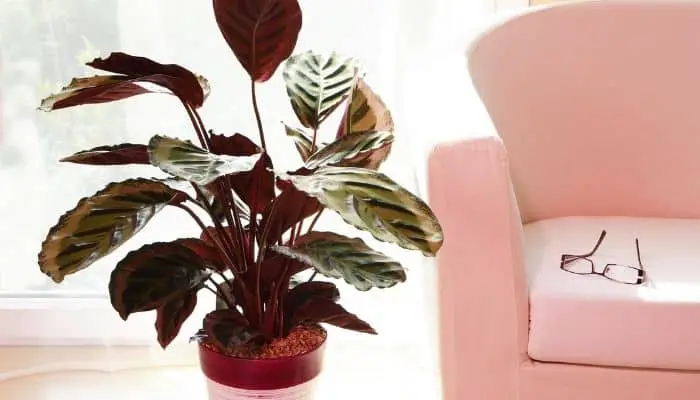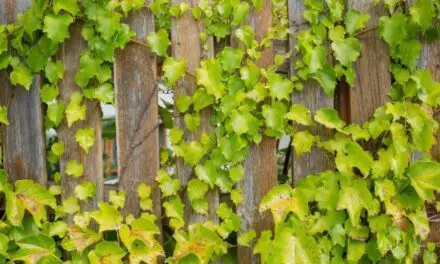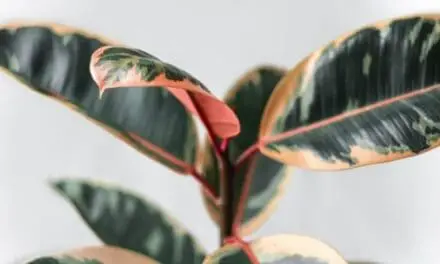When people are considering houseplants, they are often attracted to Calatheas for their air-purifying abilities, gorgeous foliage, and natural movement.
While their beautiful dark-green foliage looks amazing in every setting, there’s one specific feature of the Calathea that attracts so many people.
This plant is nicknamed the Prayer Plant because at night time its leaves close up, resembling hands that are praying.
The leaves that close at night are one of the main reasons people are drawn to Calathea plants.
However, many are left a little mystified and disappointed when their plant doesn’t appear to be closing at night.
There can be a couple of reasons for this so let’s dive in and look a little closer.
Table of Contents
Why Is My Calathea Not Closing?

Your Calathea plant isn’t closing at night because it is either not dark enough in your home or your plant is being overwatered.
Calatheas conserve moisture by closing their leaves at night – so if they are being overwatered they may not feel the need to close their leaves and hold on to moisture.
The room you’re keeping your Calathea in also needs to become sufficiently dark for it to close its leaves.
If you’re keeping it in a room that is being brightened by artificial light, it won’t close at night either.
Not Mimicking Your Calathea’s Natural Environment
Calathea plants are native to the tropical forests of South America, where they would grow under the canopy of large trees.
This allows them to receive indirect light during the day when it’s bright but not too overpowering.
This environment also creates pitch-black darkness once the sun goes down and it’s this pitch-blackness that triggers the closing of the leaves.
The opening and closing movement of this plant’s leaves is completely natural but in order for them to do this, they need lighting similar to their habitat.
If there is any sort of artificial lighting around your Calathea plant that’s probably the reason it’s not closing.
When there is an artificial light source nearby at night it signals to the plant to keep its leaves open to continue receiving light which can slow down its diurnal cycle.
Related Article: Why Is My Calathea Drooping? (And How To Revive It)
Why Do Calathea’s Leaves Stay Open During The Day?
If you’re wondering why the artificial light only affects how the plant’s leaves react at night, this is likely because the plant is in the environment it expects during the day.
Calathea plants need indirect sunlight to stay healthy.
An indoor environment is usually well-lit enough during the day to keep the plant in good condition.
The amount of bright yet indirect light a Calathea is likely to get indoors during the day is enough for the plant to carry out photosynthesis.
However, if any of that light stays on in the evening Its leaves won’t close up.
Are There Any Species Of Calathea That Don’t Close Up?
All Calathea plants have evolved to close their leaves to resemble a prayer if they are kept in the right lighting conditions.
This is because Calatheas are part of the Marantaceae family, also referred to as the arrowroot family of plants.
All types of plants from this family move their leaves along with the light and close at night.
How Lighting Affects Your Calathea
As humans, we have a diurnal cycle that goes around every 24 hours.
Our bodies are conditioned to feel sleepy when it’s dark out and have more energy when the sun’s shining.
Plants are just like us in this aspect, and the Calathea plant is conditioned for a similar cycle.
This plant is conditioned to have its leaves open during bright hours and closed when it’s dark.
If you interfere with this natural cycle, the plant will change its behavior – just as looking at phone and tablet screens can affect our sleep at night.
How To Get Your Calathea To Close Its Leaves At Night
A Calathea needs pitch black conditions to trigger its leaves to close.
Remove Artificial Light At Night
If there is any light source brightening the room it’s in at night, you’ll have to move it to a darker location if you want your plant’s leaves to close.
Move the plant to a room without any artificial lighting at night to see if there are any changes.
These plants also do best at an east-facing window, if you are able to place it near one.
Don’t Overwater Your Plant
If lighting isn’t the cause of your Calathea’s leaves not closing, it could be due to overwatering.
These plants close their leaves at night to hold onto moisture and if they are getting too much water, they may not do so.
Too much water can also lead to root rot, which can damage your plant and interfere with the movement of the leaves.
Only water it every 1 to 2 weeks.
Calatheas like their soil to be kept evenly moist (but never waterlogged).
If the top 2 inches of soil feels dry to the touch then it’s time to give it some water.
You should also mist your Calathea.
Like most tropical indoor houseplants, this plant prefers the warmth of about 65 to 85 F and an environment with a fair bit of humidity.
You can mist it about twice a week with water that’s at room temperature.
One of the first indications that the air is too dry will be brown edges on Its leaves.
Final Thoughts
Calathea plants are adapted to certain lighting conditions, and a common thing that stops their leaves from closing at night is an artificial light source.
With the right environmental conditions and watering schedule, your Calathea will thrive and you’ll get to experience the full and amazing movement of its leaves.




